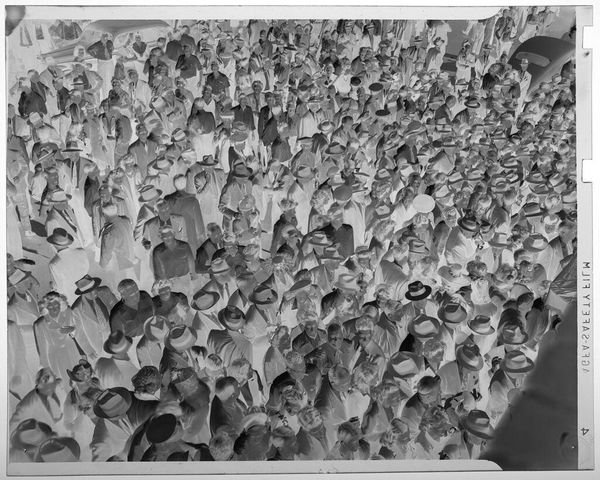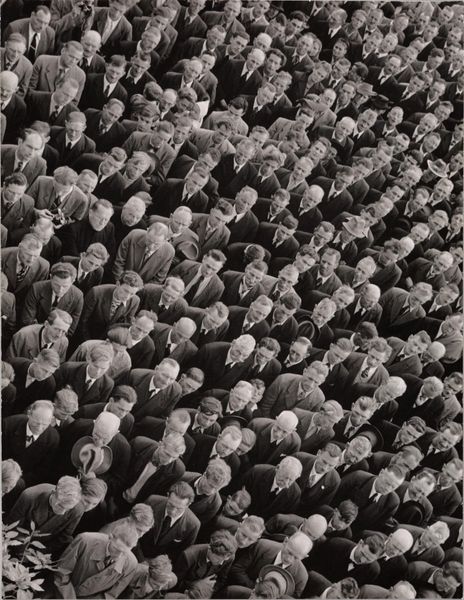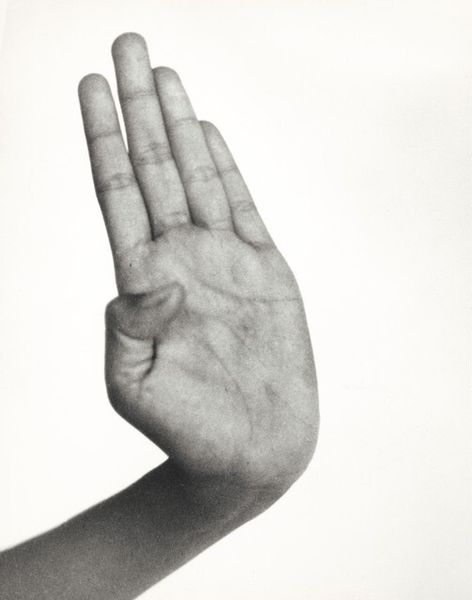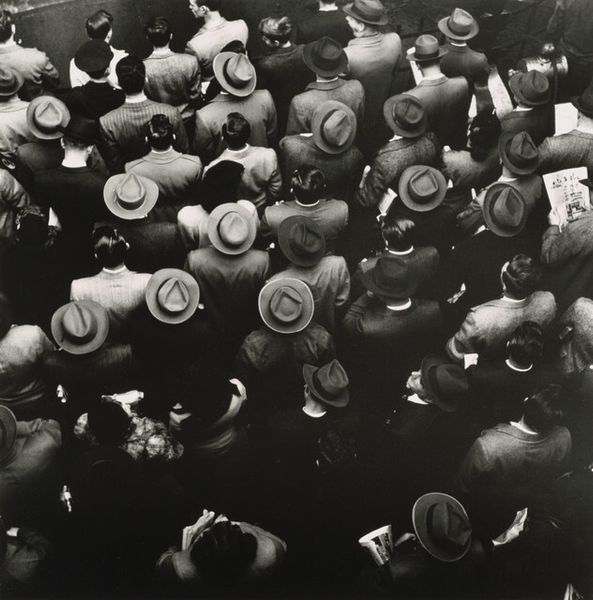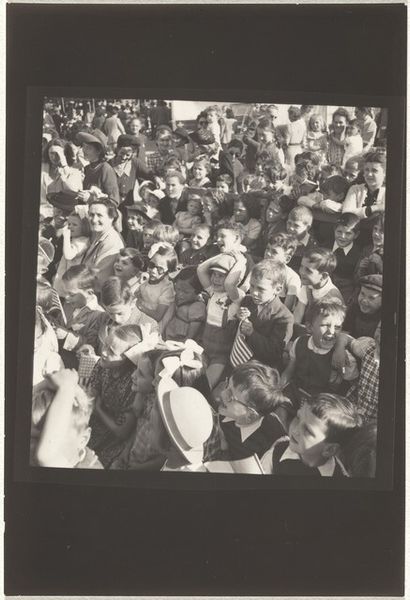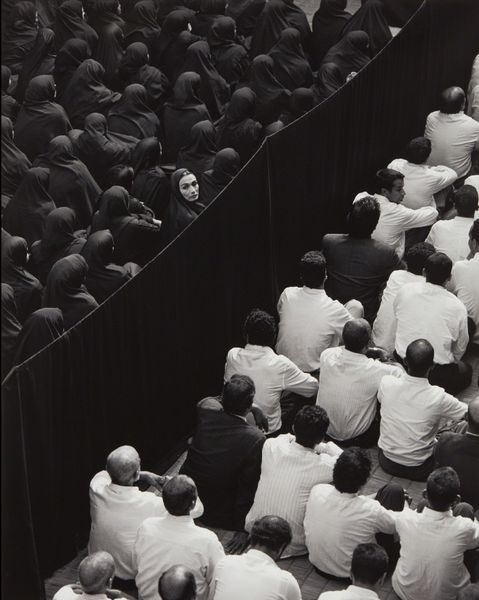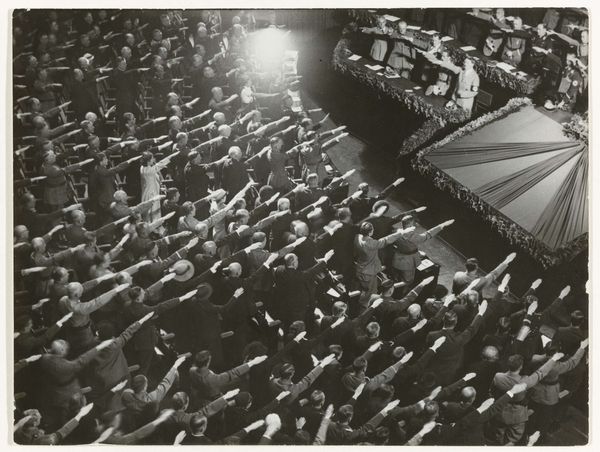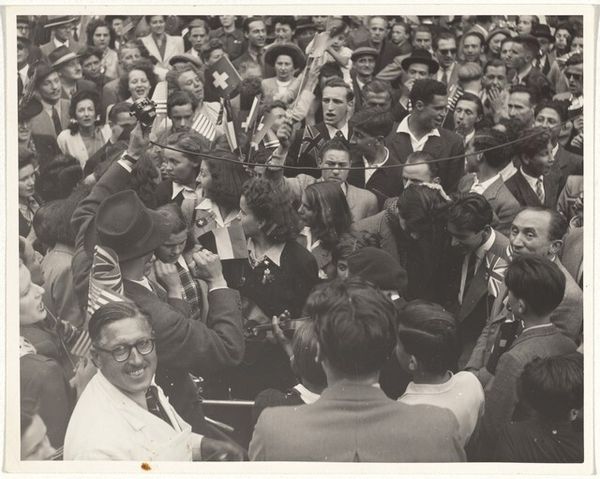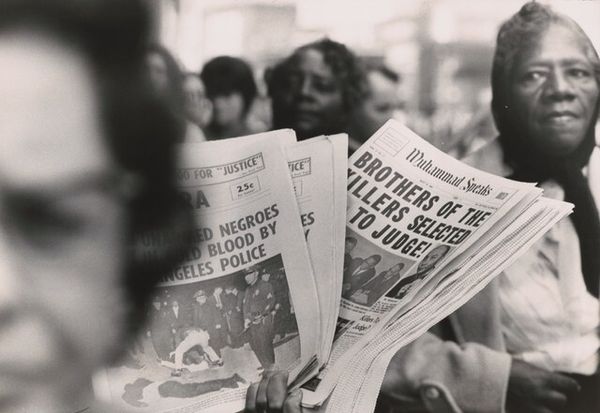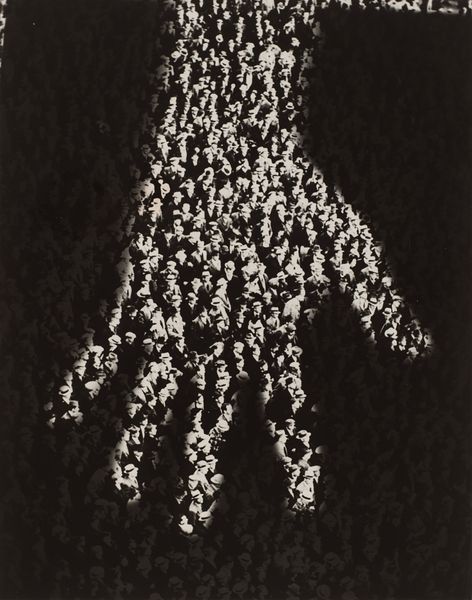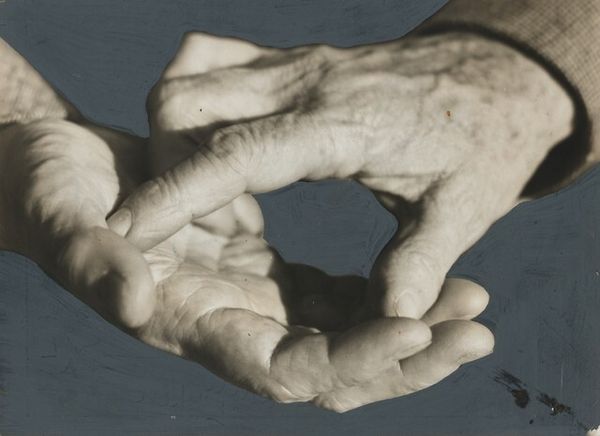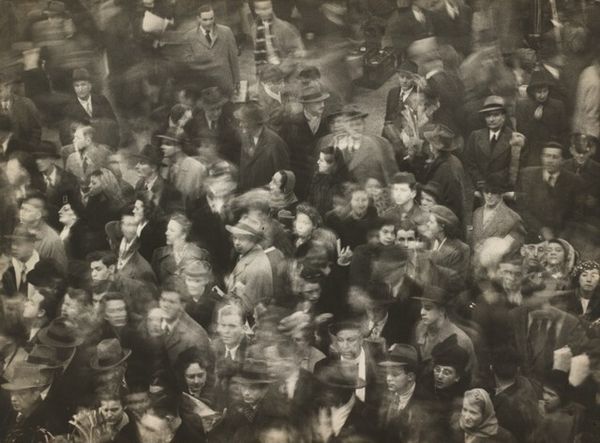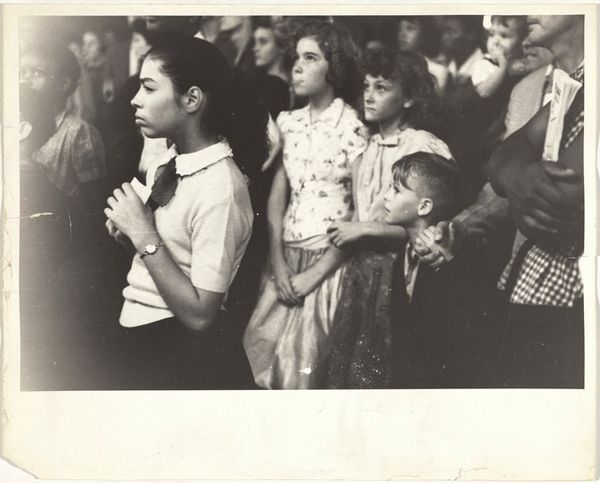
photography
#
action-painting
#
portrait
#
abstract-expressionism
#
black and white photography
#
figuration
#
street-photography
#
photography
#
monochrome photography
#
line
#
monochrome
#
monochrome
Dimensions: sheet: 41 × 50.6 cm (16 1/8 × 19 15/16 in.) image: 34.3 × 46.8 cm (13 1/2 × 18 7/16 in.)
Copyright: National Gallery of Art: CC0 1.0
Curator: We’re looking at Gordon Parks' photograph "Harlem Rally," taken sometime after 1963. What strikes you about it? Editor: So many hands reaching upwards... It feels like a surge of energy, an urgent yearning for something just out of reach. There's something deeply moving, almost spiritual, in the upward thrust. Curator: Absolutely. Parks masterfully utilizes monochrome to heighten the stark contrasts within the composition. Note how the linear arrangement of the arms directs the eye upwards, fostering a sense of unity and collective aspiration. It exemplifies compositional control. Editor: The choice to present it in black and white adds so much weight, doesn't it? It strips away the distractions, focusing our attention solely on the forms, the gestures. What do you think it communicates by the absence of other visual distractions? Curator: Indeed, it serves to emphasize the essential shapes, creating a visual grammar focused on pure form. It creates a visual experience of high impact, emphasizing contrasts. One may even be inclined to consider this photograph as verging towards action-painting, especially because of its active rhythm. Editor: Absolutely—and you sense so much more than despair. There is so much defiance—so much will. To me it makes you feel this moment has so many meanings to unpack. It’s less about a moment and more like an echo through decades. Curator: Well said. The absence of specific facial details universalizes the figures. They transform from individuals into representatives of a shared, perhaps collective human struggle and resistance. The hands themselves become emblems. Editor: Thinking about resistance...it strikes me these arms could represent so many ideas across diverse cultures and diverse needs—I find myself drifting and thinking and interpreting—which is really what I seek when connecting with a special work like this. It offers that feeling of connection that seems timeless. Curator: Yes. Ultimately, "Harlem Rally" demonstrates Parks' capacity to synthesize social documentary with profound aesthetic sensitivity. Its lasting appeal rests on the balance of these qualities. Editor: It makes me believe the possibility for change is there and, in some form, achievable. These stark forms become reminders—urgent echoes, that challenge how one connects to one’s communities. It is, in its very artful way, a beacon, even after so many years.
Comments
No comments
Be the first to comment and join the conversation on the ultimate creative platform.

